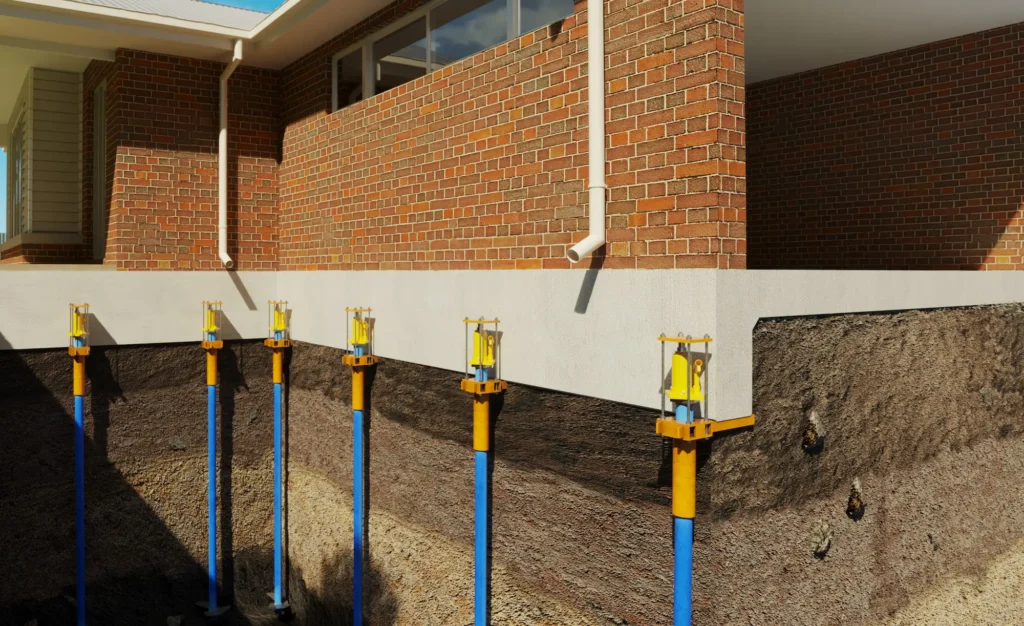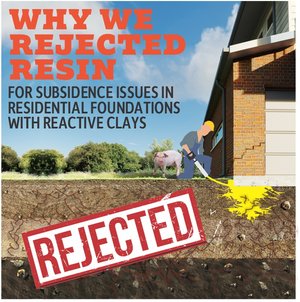Why Screw Piles Are the Superior Underpinning Method
When it comes to foundation repair and underpinning, homeowners are often faced with a confusing mix of options, methods, and advice. The stakes are high—foundation movement can compromise the structural integrity of your home, affect its value, and cause a host of ongoing issues if left unaddressed. While solutions like polyurethane resin injection materials and traditional concrete ored pier underpinning have their place, one method continues to stand out for its engineering precision, reliability, and long-term results: screw pile underpinning.
In this article, we’ll explore what makes screw piles a superior solution, how they work, and why they’re increasingly becoming the preferred choice for underpinning and structural rectification.
What Are Screw Piles?
Screw piles, also known as helical piles, are steel shafts with helical (spiral) blades welded onto them. These piles are mechanically drilled into the ground until they reach stable, load-bearing soil strata. Once in place, they provide a secure anchor point for lifting and supporting existing structures. A custom bracket is attached to the foundation footing, allowing the structure to be supported—and in many cases, gently re-levelled—with hydraulic jacks.
This method combines modern geotechnical engineering with real-time monitoring and controlled installation, making it a highly accurate and dependable foundation repair solution.
Why Do Foundations Fail and become compromised?
Before diving into the advantages of screw piles, it’s worth understanding the root causes of foundation problems. Foundations can shift or settle due to a range of environmental and structural factors:
- Expansive clay soils that swell when wet and shrink when dry.
- Tree roots that draw moisture from the soil, causing uneven drying and shrinkage.
- Poor drainage, leading to water accumulation around footings.
- Inadequate soil compaction during the original construction.
- Plumbing leaks or broken stormwater systems that erode soil beneath the house.
- Fill settlement – Significant depths of fill material across the site.
Any of these factors can lead to differential settlement—where one part of the house sinks or shifts more than another—resulting in visible cracks, uneven floors, sticking doors, and ongoing structural movement.
The Limitations of Other Methods
Polyurethane – Resin like Injection methods
Polyurethane resin like injection involves pumping expanding polyurethane foam into the ground beneath a structure. The material expands, filling voids and attempting to lift the structure. While this method can work in some applications (like minor void-filling or slab lifting), it comes with a few drawbacks:
- Unpredictable results in reactive or unstable soils.
- No structural connection to the footing—there’s no mechanical lock or bracing.
- Temporary in nature—soils continue to shift, swell and shrink over time, which resin doesn’t solve for.
- Difficult to control—precision lifting is hard to achieve.
Mass Concrete or Bored Pier Underpinning
Traditional concrete underpinning involves excavating beneath the footings and pouring mass concrete blocks or bored concrete piers to create a new bearing point. While reliable, this method is:
- Labour-intensive and time-consuming.
- Invasive—requires significant excavation and access.
- Hard to adjust later—if further movement occurs, there’s no easy way to re-stabilize or adjust the footing.
- Lacks precision—there’s no real-time feedback during installation, such as validation of load bearing capacity; end depth of that pier.
- Bored Piers can settle if not encased in the same material throughout the home – no guarantee
The Advantages of Screw Piles
1. Engineered for Precision
Each screw pile installation is torque-monitored in real-time. This data provides engineers with exact confirmation that the pile has reached competent, load-bearing strata. Screw piles deliver measurable, certifiable results from the moment they’re installed.
2. Controlled Lifting and Level Correction
Because screw piles are installed with brackets directly connected to the foundation (Lift Rig Max), they provide a point of mechanical control. Hydraulic jacks are used to lift the structure incrementally and evenly, allowing precise re-leveling. This is particularly beneficial in homes suffering from differential settlement, where parts of the house have sunk more than others.
3. Minimal Disruption to Your Property
Screw pile installations require far less excavation than traditional underpinning. The machinery used is compact and suitable for tight access areas, making this method ideal for inner-city homes or properties with established landscaping. The result is a cleaner, faster, and more efficient process that minimizes mess and inconvenience for the homeowner.
4. Long-Term Durability
Screw piles are built from high-grade steel and include corrosion protection. When installed to appropriate depths, they bypass problem soils entirely, anchoring the foundation into stable, load-bearing layers. This provides a permanent fix, even in challenging soil environments.
5. Engineered and Certifiable
Every screw pile installation is designed and signed off by a structural engineer. This means the work is not only compliant with building codes and council requirements but also comes with documented assurance of safety and stability. This is especially important for resale value, insurance, and long-term peace of mind.
6. Adaptable to a Range of Site Conditions
Screw piles can be used in a wide variety of ground conditions, from reactive clays and sandy soils to sites with limited access. Their adaptability makes them a versatile solution for everything from residential underpinning to commercial foundation repair projects.
When Are Screw Piles the Best Choice?
Screw piles are especially effective in scenarios where:
- The home is showing clear signs of subsidence (cracks, uneven floors, stuck doors).
- Soil conditions are known to be reactive or unstable.
- Long-term structural stability is a priority.
- Council approval and engineering certification are required.
- The homeowner wants a fix that’s both precise and permanent.
- The assessment of the floor slope, the curvature across the footing system and the severity of the defect present all point to if a home needs to be underpinned or not.
In many cases, screw piles are also used preemptively—before visible damage occurs or reaches a substantial level—when signs of early movement are detected or during renovation works that place additional loads on existing foundations.
Final Thoughts
Foundation issues are never something to ignore, but they don’t have to be a nightmare either. With the right advice and a proven, engineered solution like screw pile underpinning, homeowners can restore stability to their home and eliminate the ongoing stress of structural movement. Unlike quick fixes or temporary patches, screw piles offer a measurable, certifiable, and long-term foundation repair solution.
If you’re seeing signs of foundation damage, the best next step is to get a professional site assessment and engineering review. From there, you’ll have a clear path forward—and the confidence that your home is supported by a solution designed to last for decades to come.



